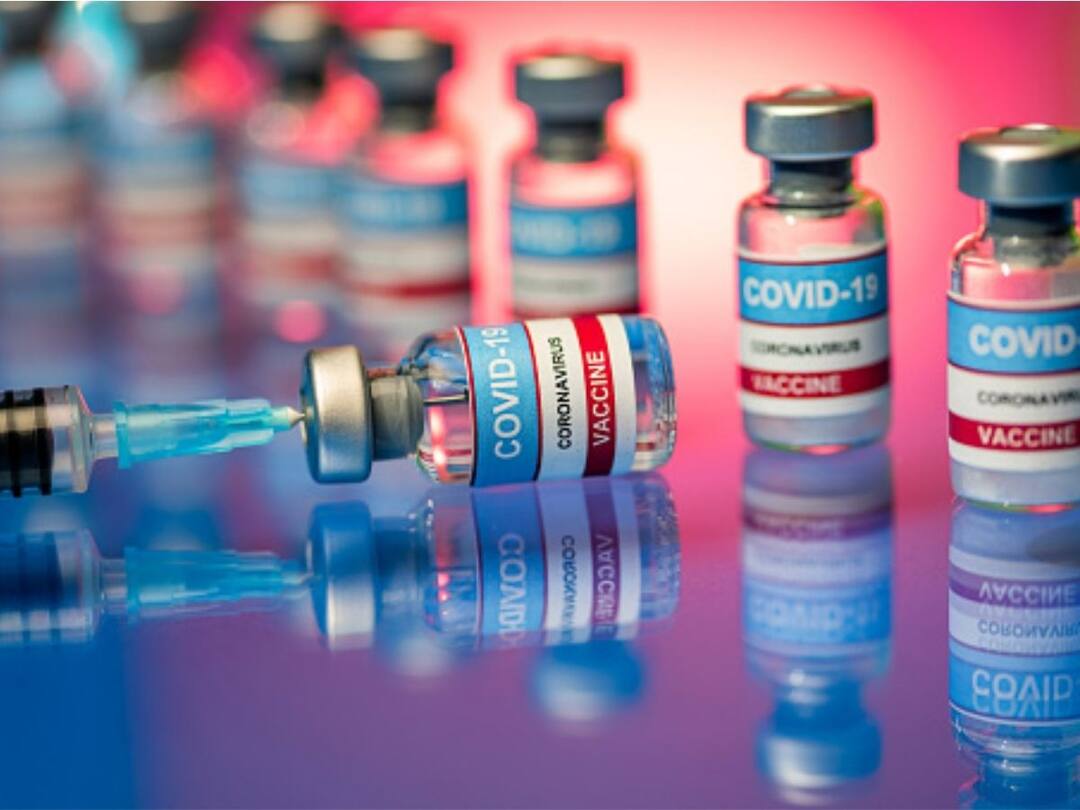How Protein Nanoparticle Vaccines Have The Potential To Be Developed Into 'Safer' Covid-19 Vaccines: Study
The spike protein (S) on SARS-CoV-2 is the preferred target antigen for vaccine development, based on its essential function and neutralising epitopes to combat the virus.

New Delhi: A nanoparticle vaccine which combines two proteins that induce immune responses against SARS-CoV-2 has the potential to be developed into 'broader' and 'safe' Covid-19 vaccines, according to a new study.
The Covid-19 pandemic, or the SARS-CoV-2 pandemic, has claimed more than six million deaths since 2019, and is a public health burden worldwide. The rapid evolution of SARS-CoV-2 is characterised by the emergence of several significant variants, including Delta and Omicron.
The study, led by researchers in the Institute for Biomedical Sciences at Georgia State University, was recently published in the journal Small.
What Is A Nanoparticle Vaccine?
A nanoparticle-based vaccine is one in which the receptor-binding domain (RBD), which is a part of the spike protein of SARS-CoV-2, is attached to a protein designed to form nanometre-sized protein particles, or nanoparticles, according to a study by the US National Institutes of Health (NIH), which was published in the journal, Nature. SARS-CoV-2 attaches itself to cells using the spike protein.
These nanoparticles could be composed of lipids, metal and non-metal inorganics, several polymers, and virus-like particles which have been tested for research, according to a study published by the National Center for Biotechnology Information (NCBI), NIH. Virus-like-particles (VLP) are self-assembling nanoparticles lacking infectious nucleic acid.
Hyderabad-based Serum Institute of India's Covovax is a nanoparticle-based vaccine, manufactured by technology transfer from Novavax.
Spike Protein On SARS-CoV-2 Is Preferred Target Antigen For Vaccine Development
The spike protein (S) on SARS-CoV-2 is the preferred target antigen for vaccine development, based on its essential function and neutralising epitopes to combat the virus. An epitope is the part of an antigen molecule to which an antibody attaches itself.
The new study was conducted in mice, with the researchers investigating the immune response induced by two proteins, the spike protein and the relatively conserved stem subunit (S2) of the spike protein. The researchers found that the assembly of the two proteins into double-layered protein nanoparticles improves the immunogenicity of the proteins. Immunogenicity is defined as the ability of a molecule or substance to provoke an immune response.
In a statement released by Georgia State University, Dr Baozhong Wang, senior author of the study, said the entire S protein has been used as the major antigen in vaccines against the ongoing pandemic, adding that as the number of infections continues to rise, more and more variants have appeared and supplanted the ancestral virus.
Since the variants have superseded and replaced the ancestral virus, the efficacy and protection of current vaccines are under constant threat and need continuous improvement, Wang explained.
What Does The Stem Subunit Of Spike Protein Do?
He further said that in contrast, the stem subunit of the spike protein is more conserved and has fewer mutations across lineages. He added that the stem could induce effective antibody neutralisation and vigorous antibody-dependent cellular cytotoxicity (ADCC) activity against multiple variants of S protein. ADCC, also known as antibody-dependent cell-mediated cytotoxicity, is a type of immune reaction in which a target cell or microbe is coated with antibodies and killed by certain types of white blood cells.
Wang explained that the work shows that the stabilised stem subunit could be a potential antigen for a SARS-CoV-2 universal vaccine against unpredictable variants.
How Does Immunisation With Stem-Induced IgG Occur?
According to the study, immunisation with the stem-induced balanced Immunoglobulin G (IgG) antibodies occurred through potent and broad ADCC activity, which is a type of immune reaction on which infected cells are coated with antibodies that recruit certain types of white blood cells to kill the infected cells. The study also found that the double-layered protein nanoparticles constructed from the stem and the full-length spike protein induced more robust ADCC and neutralising antibodies than the stem and spike protein, respectively.
How Are Nanoparticles Beneficial?
The nanoparticles were observed to produce more potent and balanced serum IgG antibodies than the corresponding soluble protein mixture. The researchers also found that the immune responses are sustained for at least four months after the immunisation.
The stem induces a more balanced IgG isotype antibody. In immunology, antibodies or immunoglobulins are classified into several types called isotopes or classes. The double-layered nanoparticles not only have a more balanced IgG isotype antibody induced by the stem, but also long-lasting immune responses, and excellent safety profiles. As a result, the nanoparticles have the potential to be developed into broader SARS-CoV-2 vaccines, the authors noted in the study.
Dr Yao Ma, the first author of the study, said the stabilised, conserved S2 stem subunit demonstrated its potential as a universal SARS-CoV-2 vaccine candidate against unpredictable variants. The double-layered protein nanoparticles incorporating the full-length spike protein and the S2 stem induced robust and long-term immune responses, and exhibited a safety profile in the primary studies, Ma added. This provides an option for current SARS-CoV-2 vaccine development.
Ma further said that the pandemic is far from over, and new variants continue to emerge and pose a massive threat to human health. In order to avoid another pandemic with an unpredictable new variant, the updating of vaccines needs to keep pace with the times.
How Does A Nanoparticle-Based Vaccine Work?
Nanoparticles help improve vaccine efficacy, by targeting desired antigen-presenting cells to improve immunisation strategies. They protect the antigen (foreign particle) from early proteolytic degradation (degradation of protein by hydrolytic enzymes), control antigen release, and facilitate antigen uptake.
Current vaccines cause cells in the body to make a version of the spike protein to elicit an immune response. Putting multiple copies of the RBD on nanoparticles enhances immune response, recent studies have found. The NIH researchers tested nanoparticle-based vaccines in monkeys and found that most of the monkeys had no virus in their lower respiratory tracts two days after exposure.
Nanoparticle-based vaccines contain a strand of genetic code that provides instructions for building a version of the spike protein, according to an article by the University of Pittsburgh Medical Center, US. Host cells build the protein when they see the genetic code.
The immune system begins building antibodies against the protein, which help the immune system fight the coronavirus. The body builds up an army of antibodies, which can fight off a Covid-19 infection before it causes disease.
Since mRNA is very fragile on its own, it would degrade in the body if it is injected simply as a strand. Hence, the genetic material is protected with a nanoparticle, which preserves the mRNA long enough to carry it into the body’s cells so that they can begin making the proteins.
The use of nanoparticles in vaccine formulations allows not only improved antigen stability and immunogenicity, but also targeted delivery and slow release, according to a article published in the journal, Elsevier.
Check out below Health Tools-
Calculate Your Body Mass Index ( BMI )







































